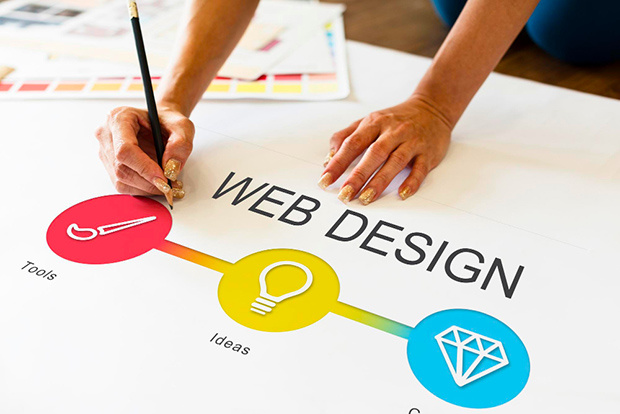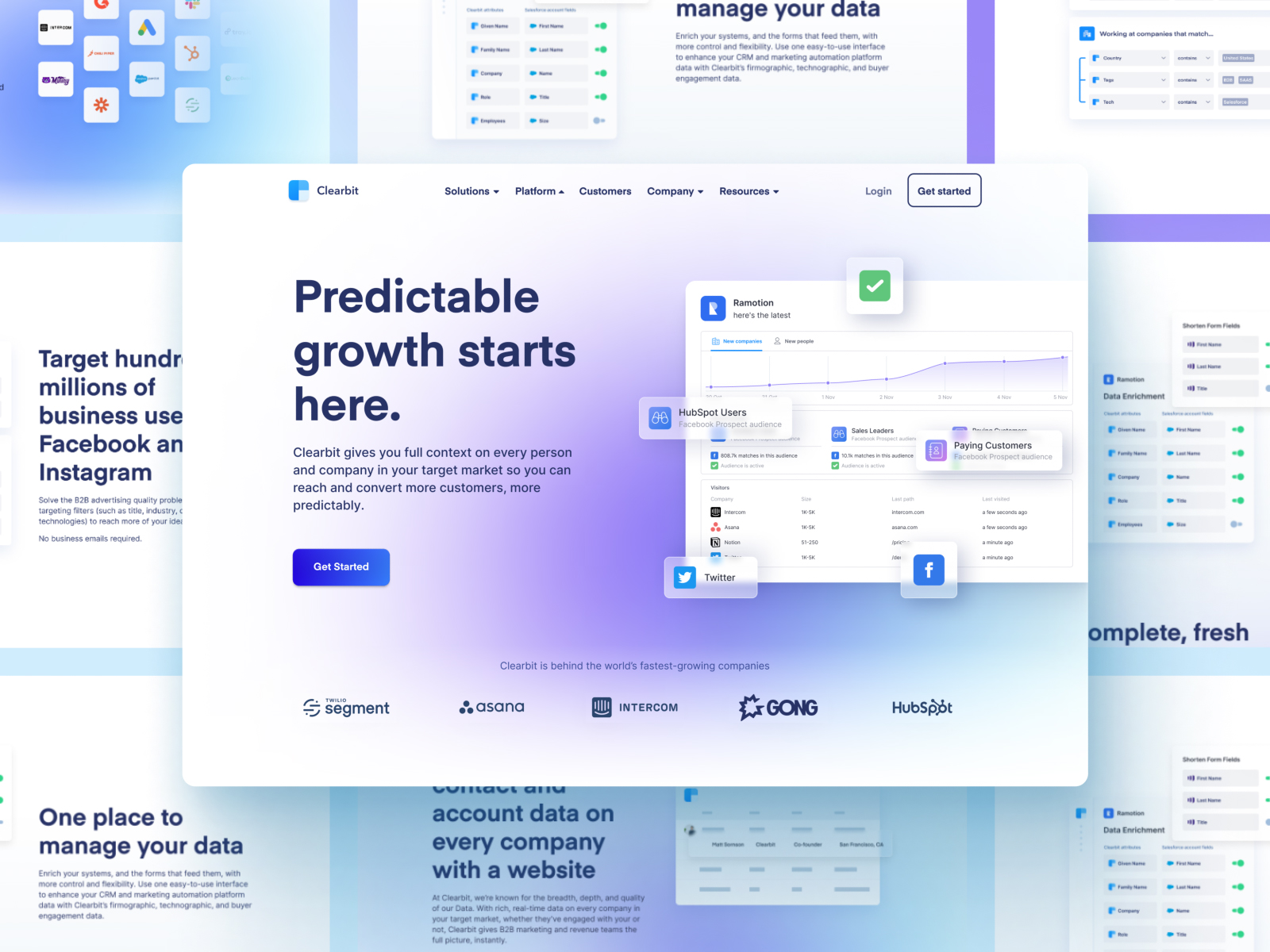The Comprehensive Overview to Crafting Aesthetically Appealing and Useful Website Design That Meets User Demands
In today's digital landscape, the importance of crafting internet designs that are both visually enticing and functional can not be overstated. By focusing on user-centered layout principles, developers can develop experiences that not only draw in however additionally keep individual passion.
Comprehending User-Centered Style
At the heart of reliable web design lies the concept of user-centered layout, a philosophy that prioritizes the requirements, choices, and actions of customers throughout the advancement procedure. This strategy involves extensive study to understand the target audience, guaranteeing that the end product reverberates with its designated customers. By including customer responses at every phase, designers can create interfaces that are not only visually appealing but user-friendly and likewise practical.
User-centered style emphasizes empathy, requiring designers to step into the users' shoes and consider their point of views. Methods such as customer personalities, trip mapping, and usability screening are employed to identify pain factors and chances for improvement. This iterative process enables for constant refinement, as developers adjust to progressing individual needs and technical advancements.
Including user-centered style results in increased user satisfaction and involvement, eventually leading to greater conversion prices and brand name loyalty. It cultivates a joint atmosphere where stakeholders, consisting of designers, users, and designers, work with each other to accomplish a shared vision. By putting users at the center of the style process, companies can create internet sites that not only fulfill service objectives however also supply satisfying and meaningful experiences for individuals.
Trick Principles of Visual Layout
Effective visual layout works as the structure for developing appealing and straightforward internet sites. It encompasses a number of crucial concepts that direct developers in crafting cosmetically pleasing and functional interfaces.
First, equilibrium plays an essential function in attaining aesthetic harmony. Designers must disperse components evenly throughout the layout to avoid frustrating customers. This can be achieved through unbalanced or symmetrical design methods.

Furthermore, alignment is crucial for organizing details. Constant alignment of text and pictures fosters a tidy layout, enhancing total navigating and individual experience.
 Closeness likewise adds to aesthetic clarity. Grouping associated things together aids individuals in recognizing the partnership between different aspects, making the user interface more intuitive.
Closeness likewise adds to aesthetic clarity. Grouping associated things together aids individuals in recognizing the partnership between different aspects, making the user interface more intuitive.Finally, uniformity in design aspects, such as designs, typefaces, and shades, reinforces brand identity and helps individuals browse the website extra easily. By including these key principles of visual design, web developers can develop user interfaces that are not only visually appealing yet likewise practical and user-centered.

Relevance of Responsive Style
Receptive style is a crucial aspect of modern-day web advancement, making certain that websites operate flawlessly across a variety of tools and screen dimensions. As the web landscape advances, the variety of devicesâEUR" ranging from smartphones to tablet computers and desktop computersâEUR" necessitates a style method that suits all customers.
Carrying out receptive style permits an adaptable design that instantly adapts based on the customer's screen measurements. This adaptability not just boosts ease of access however additionally boosts usability, as users can navigate and engage with the website easily, despite their device.
In addition, online search engine like Google prioritize mobile-friendly web sites in their ranking formulas. A responsive layout can substantially enhance a website's search engine optimization efficiency, ultimately driving more web traffic and boosting exposure.
Furthermore, responsive style decreases the demand for keeping several versions of a web site, enhancing updates and content administration. This effectiveness equates into expense savings and a more cohesive brand name experience throughout systems.
Enhancing Customer Experience
Customer experience (UX) is a pivotal component of website design, affecting exactly how visitors interact with an internet site and regard try this site its worth. A well-crafted UX makes certain that individuals can navigate intuitively, discover info easily, and achieve their objectives effectively. The layout has to think about the individual's journey, from the minute they come down on the website to the completion of their desired action, whether that be making an acquisition, registering for an e-newsletter, or accessing information.
Crucial element that enhance UX include clear navigation, responsive layouts, and engaging aesthetic content. Uniformity in design components such as shades, fonts, and switches promotes familiarity, making the web site really feel cohesive. Furthermore, optimizing tons times is essential; individuals are much less likely to remain on a website that is slow-moving to react.
Including availability attributes guarantees that all individuals, consisting of those with disabilities, can engage with the website seamlessly. Moreover, user-centric layout principles ought to assist material organization, offering appropriate details in a sensible structure. By prioritizing individual requirements and choices, internet designers can create experiences that are not only aesthetically enticing but also useful, inevitably fostering user contentment and commitment
Testing and Iterating Designs
Evaluating and iterating layouts are basic procedures that adhere to the initial development of a web site, making certain that the user experience remains at the forefront of any modifications. These stages involve gathering customer feedback, examining style efficiency, and making informed modifications to enhance usability and engagement.
Effective screening can take numerous kinds, consisting of use screening, A/B testing, and user studies. Use screening enables designers to observe actual individuals as they engage with the web site, determining pain factors and locations for enhancement. A/B testing, on the other hand, contrasts 2 variations of a design element to establish which executes better, providing measurable information to guide choices. Individual studies click for source can provide qualitative insights, recording individual sentiments and choices.
As soon as testing is finished, the model phase begins. This includes refining the design based upon the gathered data, focusing on modifications that align with individual needs and organization goals. Continual version fosters a flexible design technique, where the internet site develops in feedback to user actions and feedback. By dedicating to strenuous testing and model, designers can produce an internet site that not only fulfills aesthetic standards but likewise provides a content enjoyable and smooth customer experience.
Conclusion
To conclude, reliable internet style requires the assimilation of user-centered principles, key aesthetic style aspects, and responsive structures to develop appealing interfaces. By focusing on customer requirements and executing continuous screening and version, designers can improve their productions to improve overall satisfaction. The dedication to these methods not only cultivates an aesthetically appealing visual however also makes certain performance across varied gadgets, ultimately adding to a positive customer experience and enhanced engagement.
By focusing on user-centered design concepts, designers can produce experiences that not only draw in but likewise keep customer rate of interest.At the heart of reliable web layout lies the concept of user-centered design, an ideology that prioritizes the demands, preferences, and habits of users throughout the advancement procedure. By placing customers at the forefront of the layout process, organizations can develop sites that not just meet service purposes but additionally offer fulfilling and significant experiences for customers.
By focusing on user demands and choices, web developers can create experiences that are not only aesthetically attractive however also practical, ultimately cultivating customer complete satisfaction and commitment.
User studies can supply qualitative insights, catching user beliefs and choices. (web design)